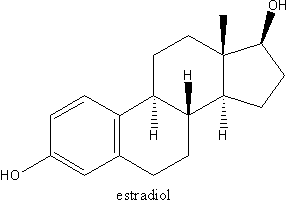A combination hormone therapy that contains drospirenone was approved in late September for treating moderate to severe vasomotor symptoms and moderate to severe symptoms of vulvar and vaginal atrophy associated with menopause, the first such product to contain this particular progestin.
The approval came with certain warnings in the label related to the potential for hyperkalemia associated with the progestin component. The product--which contains 1 mg estradiol and 0.5 mg drospirenone (DRSP), a synthetic progestin and spironolactone analog with antimineralocorticoid activity--will be marketed by Berlex as Angeliq. The approved dose is one tablet daily.
The product will not be available until mid-2006, according to Berlex, which also manufactures Yasmin, the oral contraceptive that contains DRSP as its progestin component.
In addition to the standard contraindications and warnings that are included in the FDA-approved labels of all hormone therapy (HT) products, the Angeliq label includes a warning about the potential for hyperkalemia in high-risk patients, because DRSP has antialdosterone activity. The warning also notes that the product should not be used in women with renal or adrenal insufficiency, hepatic dysfunction, or other conditions that predispose people to hyperkalemia.
It should be used with caution in women on other medications that can increase potassium, including NSAIDs, potassium-sparing diuretics, ACE inhibitors, or angiotensin II receptor antagonists. The label says that checking serum potassium levels during the first treatment cycle in women at high risk should be considered.
FDA approval for the indication was based on a study showing that the estradiol component of Angeliq was bioequivalent to a currently marketed estradiol product (Estrace). In another study on the endometrial effects, there were no cases of endometrial hyperplasia among almost 200 patients who had received the product for up to 12 months.
For relief of symptoms, "it's another option that physicians can add to their armamentarium of the whole range of products now available," Wulf H. Utian, M.D., executive director of the North American Menopause Society, said.
Because of its chemistry, Angeliq is less likely to cause fluid retention "at least in theory," and potentially might be associated with fewer of what he calls the "nuisance symptoms" that some women experience with progestin, such as a bloated feeling; tender breasts; sleepiness; or a reduced sense of well-being or slightly depressed mood, Dr. Utian noted.
But because HT products are not directly compared in clinical trials and there are no published data on this issue, he said it was difficult to comment on the effect that the DRSP component might have on mitigating these types of side effects. Nevertheless, Dr. Utian said that he welcomed the availability of a new HT product as a positive development because it increased the number of treatment options for women, who react to different progestins in different ways.
What remains are major unresolved safety questions regarding the longer term use of progestins in general, when used with estrogen, Dr. Utian noted. Those questions are whether progestin administered with continuous estrogen treatment slightly increases the risk of breast cancer beyond 5 years of use, which has been observed in the WHI and other studies, and whether the progestin component may be responsible for the slight increase in coronary heart disease observed in the WHI and the Nurses' Health Study.
Dr. Utian, a gynecologist at the Cleveland Clinic Foundation, Cleveland, was not an investigator in Angeliq trials, but he is the director of a research institute that is currently conducting a study of this product.
BY ELIZABETH MECHCATIE
Senior Writer
COPYRIGHT 2005 International Medical News Group
COPYRIGHT 2005 Gale Group



